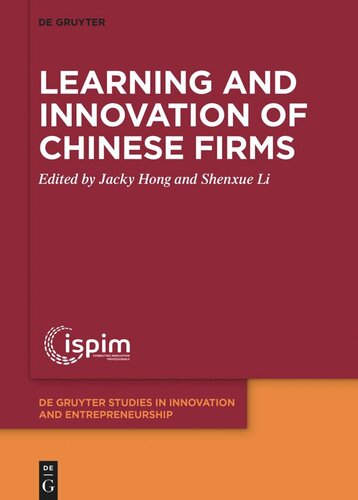

Most ebook files are in PDF format, so you can easily read them using various software such as Foxit Reader or directly on the Google Chrome browser.
Some ebook files are released by publishers in other formats such as .awz, .mobi, .epub, .fb2, etc. You may need to install specific software to read these formats on mobile/PC, such as Calibre.
Please read the tutorial at this link: https://ebookbell.com/faq
We offer FREE conversion to the popular formats you request; however, this may take some time. Therefore, right after payment, please email us, and we will try to provide the service as quickly as possible.
For some exceptional file formats or broken links (if any), please refrain from opening any disputes. Instead, email us first, and we will try to assist within a maximum of 6 hours.
EbookBell Team

0.0
0 reviewsThis edited volume explores the learning and innovation of Chinese firms. In particular, it examines the difficulties and obstacles affecting the technological collaboration between Chinese firms and foreign partners as well as some of the key organizational and institutional challenges of innovation facing Chinese firms.
Despite enjoying rapid economic growth in previous decades, learning and innovation of Chinese firms has received relatively limited attention among management and international business scholars in the past. However, some significant changes in the Chinese institutional environment have occurred in recent years. On one hand, the Chinese central government has devised a number of policy initiatives to promote and support innovative activities in China, ranging from the ‘Mass Entrepreneurship and Innovation by All’ to the latest ‘Made in China 2025’. On the other hand, we have witnessed an increasing number of indigenous Chinese firms (e.g. Alibaba, Baidu, Tencent, Huawei and DJI) adopting business model innovation with global inputs and impacts in different business sectors, namely electronic commerce, telecommunication network equipment, social media, mobile payment and drones.
In view of these recent developments, we aim to further our understanding about the learning and innovation processes of Chinese firms in this edited volume.